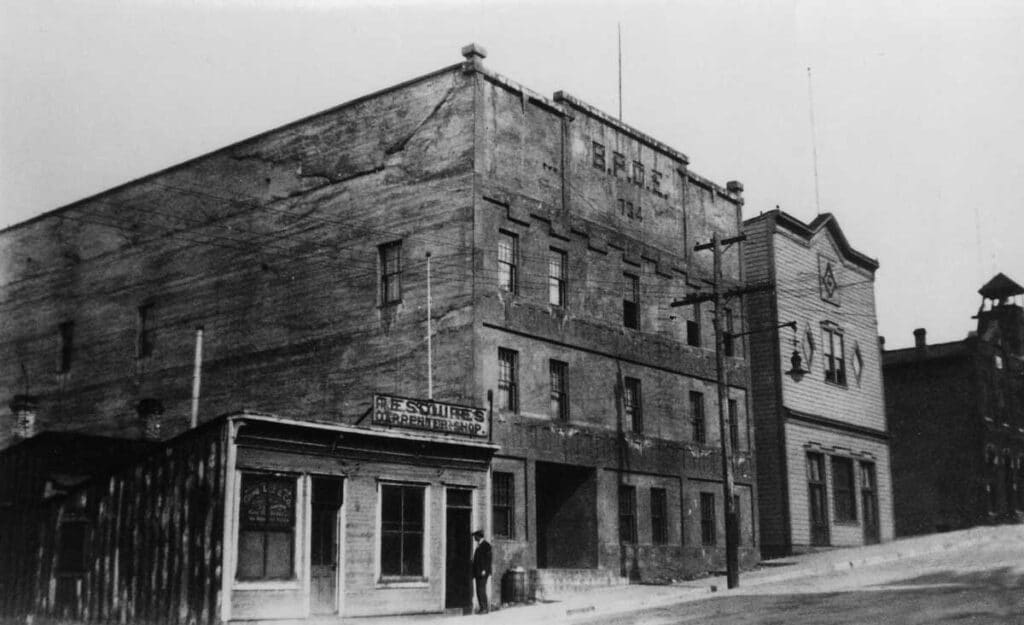Many people can reminisce about the history through which they have lived. This writer, for example, has witnessed 9/11, Michael Phelps record-setting Olympics in 2008, and the election of the first black president of the United States. But rarely are we present for the historic moments. I was not in New York the day the towers fell. I was not poolside watching Phelps win gold medal after gold medal. And I was not at Barack Obama’s inauguration (nor was I even old enough to vote in 2008).
Some lucky modern Parkites were able to witness fantastic athletic accomplishments at the 2002 Winter Olympics. Others may have witnessed historic events in other parts of the country. Town photographer Kendall Webb, who lived in Park City from 1946 until his death in 1975, was witness to the attack on Pearl Harbor.
But most of us have not had so consistent a brush with history, or as many legendary tales as Parkite Richard E. “Dick” Squires.
R.E. Squires was born on August 3, 1845 in Binghampton, New York, where he spent his first quarter-century living with his beloved mother and learning to become a carpenter.
Ultimately, the American West called his name and he left New York in October 1871. He arrived in Chicago on October 15, 1871, only three days after the Chicago Fire that leveled most of the then Cowtown. He stayed there only half a year (strange, considering his carpentry skills would have been desirable as Chicago rebuilt) and became a carpenter for a steamboat on the Mississippi and Missouri Rivers. On that boat, then traveling from Sioux City, Iowa to Fort Buford, North Dakota he met and befriended the notorious Lieutenant Colonel George Custer.
Squires arrived in Utah in the early winter of 1879, getting off the Transcontinental Railroad at Echo and heading down to Wanship. He then walked twenty miles from Wanship down to Park City in the middle of February winter, all the way being stalked by a mountain lion. He arrived in Park City on February 23, 1879. The mountain lion was captured and killed a few days later – it measured eight feet and seven inches long. Squires quipped that had he known the lion was stalking him, he would have set the speed record for travel between Wanship and Park City.
Owing to his relatively early arrival to the still booming mining town, Squires’ carpentry was a welcome addition – and not just for buildings. There was no undertaker in town at that time, so many of his first jobs were putting together caskets.

Credit: Park City Historical Society & Museum, Thomas F. Hansen Collection
Squires witnessed Park City’s first big explosions of growth. His shop burned down in the Great Fire of 1898. He saw all the ups and downs of the mining industry up to the Great Depression. He had a hand in building many of Park City buildings – some of which still stand today.
Apparently, every Parkite knew him, and he made thousands of connections and friends across the United States. Even animals loved him. At least two separate porcupines wandered into or near his shop and became his pets (read our Way We Were on one of those occasions).
He passed away March 25, 1931 at 85 years old, then the oldest Parkite and one of the last people remaining from Park City’s “pioneer” days.
Friend Jim Don wrote his obituary, which ran in the Park Record two days later. Don memorialized that “he witnessed the ups and downs of mining camp life including its murders, suicides, jail, fire, hangings, stabbings, gambling, and other incidents that naturally followed in the day’s sensations of the early ‘locators,’ few of whom are now left to vouch for its wild west realism. Dick was a recognized authority on all important happenings in Park City since the days of sage brush ‘highways’ and ox team ‘power transmission.’”
Learn more about Park City’s colorful characters and history at the Park City Museum, open every day from 10 a.m. to 5 p.m. The Museum and the Friends of Ski Mountain Mining History are hosting a lecture titled “Explosion in the Daly West, July 15, 1902–Not a Scrap of His Body Was Found Anywhere” given by the University of Utah’s Dr. Mike Nelson on Wednesday, July 26 from 5-6 p.m. at their Education and Collections Center located at 2079 Sidewinder Drive.